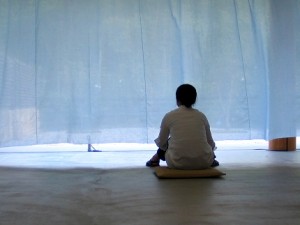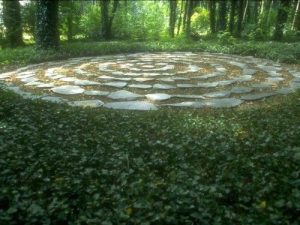 The Yogabliss, Two Rivers/RiverTree Yoga on-line Moving into Meditation classes met this morning. Today we investigated the truth of our experience in the present moment. If we can bring loving awareness and patient curiosity to experience we can learn a lot about our human condition. We can cultivate a sense of being grounded and allow perspective to emerge. Perspective often yields understanding about ourselves and others. Understanding helps to connect with our inner resources of compassion and loving kindness.
The Yogabliss, Two Rivers/RiverTree Yoga on-line Moving into Meditation classes met this morning. Today we investigated the truth of our experience in the present moment. If we can bring loving awareness and patient curiosity to experience we can learn a lot about our human condition. We can cultivate a sense of being grounded and allow perspective to emerge. Perspective often yields understanding about ourselves and others. Understanding helps to connect with our inner resources of compassion and loving kindness.
We drew inspiration from David Whyte’s poem Working together. This poem is drawn from his collection, The House of Belonging. His poem is a meditation on how we are shaped by the world. So many of life’s miracles arise from the interplay of what we see and what goes unseen. The poem reminds me of the many times we choose to trust in life’s ordinary offerings.
We drew from meditation instructor Oren Jay Sofer’s course on mindful communication meditation. Oren reminds us to be aware of how we approach meditation. Whatever we practice repeatedly informs the way we approach our life. You can learn more about Oren’s upcoming class: Say What You Mean.
We also heard from, The Conscious Effort True Love Requires, an essay written by meditation instructor Sharon Salzberg. Sharon suggests that challenging our habits, judgments and stories opens the door to loving.
Finally, Philip Booth’s poem, How to See a Deer, Philip Booth describes the qualities we need to see something wild and beautiful: kindness, interest, patience and curiosity,
Starting by setting a clear and gentle intention to really be fully present. Bring your attention into your body: this incredible breathing, moving, feeling. gift. This body is always right here: giving us a place to rest and center our attention. Feel the places your body is touching Earth.
See if you can tune into the your sense of Earth: a stable steady sense of deep abiding. Release down on to Earth.
From this place of being even a little bit more grounded, begin to look around inside. How am I doing right now? What’s true for me in this moment? No need to analyze or evaluate. Tune in to what’s present in your body, your heart. your mind. What different energies are present; what moods or emotions? Meet the truth of your experience, just as it is, right now. You can rest your attention with your breathing body. This practice is one of opening, listening and looking deeply.
 We create and sustain attention with perspective. Perspective comes from being grounded. Perspective can comes from recognizing the space around you. Perspective comes from the compassion or love in your heart that tells you: whatever’s happening is o.k. It can also come from understanding the ever changing nature of things. Nothing is really personal and we’re not in control. We look deeply and experience the nature of life. We bring our attention to whatever is happening. We open our hearts to the true experience in this moment and know we are not alone. Poet David Whyte writes how we are working together:
We create and sustain attention with perspective. Perspective comes from being grounded. Perspective can comes from recognizing the space around you. Perspective comes from the compassion or love in your heart that tells you: whatever’s happening is o.k. It can also come from understanding the ever changing nature of things. Nothing is really personal and we’re not in control. We look deeply and experience the nature of life. We bring our attention to whatever is happening. We open our hearts to the true experience in this moment and know we are not alone. Poet David Whyte writes how we are working together:
Working Together
We shape our self
to fit this world
and by the world
are shaped again.
The visible
and the invisible
working together
in common cause,
to produce
the miraculous.
 I am thinking of the way
I am thinking of the way
the intangible air
passed at speed
round a shaped wing
easily
holds our weight.
So may we, in this life
trust
to those elements
we have yet to see
or imagine,
and look for the true
shape of our own self,
by forming it well
to the great
intangibles about us.
” . . . We shape ourselves to fit this world and by the world are shaped again. . . .” Every day “. . . the visible and invisible work together . . .” in the every day miracles of our lives. May we trust the unseen and look for what is true in meeting the world around us.
 In truly meeting ourselves we can hope to meet others. We become aware of how we think of ourselves. How we think of ourselves is the seed from which we become ourselves. Right now we can reflect on this powerful truth. How do our thoughts inform what we say and do in the world? We can notice how we approach life; how we approach our meditation. Our approach conditions our minds. In his course on mindful communication meditation teacher Oren Jay Sofer advises:
In truly meeting ourselves we can hope to meet others. We become aware of how we think of ourselves. How we think of ourselves is the seed from which we become ourselves. Right now we can reflect on this powerful truth. How do our thoughts inform what we say and do in the world? We can notice how we approach life; how we approach our meditation. Our approach conditions our minds. In his course on mindful communication meditation teacher Oren Jay Sofer advises:
If you meditate with strain, struggle, impatience and tension, you’re reinforcing strain and struggle in your heart and mind. If you meditate with kindness, interest, patience and curiosity, you’ll strengthen those qualities in your heart and mind.
Can we bring curiosity and genuine interest to our practice? Can we meet what we discover with kindness? Can we find an inner place of safety from which we can adventure outward and return again? In our practice we can explore venturing out in challenging ways and then returning again knowing ourselves just a little bit better. We might develop a more expansive compassion that includes other humans and more than humans.
In our practice we experience the truth of impermanence – things are ever changing – even who we think we are. Being willing to feel the pain and sometimes the relief in that truth helps us develop the compassion and wisdom we need in our relationships. Our willingness to see what we don’t want to see, feel what we don’t want to feel, hear what we don’t want to hear stretches our hearts and minds just a little bit more every time we manage to do it. This is effort, this is practice, this is an act of love. We start with what is true for us so that me might recognize deeper truths: the deeper feelings and needs that are seeking to be acknowledged and fulfilled. We become better able to connect with what underlies another’s words and actions.
 Our deeper feelings and needs inhabit our hearts and they can’t live alone. As human beings we flourish in relationship. When we can recognize a bit of ourselves in another, understanding begins to open our hearts. In her essay, The Conscious Effort True Love Requires, Sharon Salzberg writes:
Our deeper feelings and needs inhabit our hearts and they can’t live alone. As human beings we flourish in relationship. When we can recognize a bit of ourselves in another, understanding begins to open our hearts. In her essay, The Conscious Effort True Love Requires, Sharon Salzberg writes:
The love we can cultivate for ourselves, which can unfurl as we practice challenging our habits, judgments, and assumptions (our stories, in other words), can open up a more expansive capacity for more love to come in, and to be sent out. We feel more whole, and less fragmented. We see that we are worthy of happiness, and that others are, too.
Take a moment to reflect on this. Tune into the deeper needs that might be alive for you. So many needs serve our well being in life: safety, trust, independence, joy, closeness, acceptance, to be seen, heard, understood. See if you can tune into what you want and express it as simply as you can. Say it silently, hearing it, it feeling it. Shift from thought to feeling as best you can. Honor what is important for you. Let yourself meet this need as you would be meeting a friend – kindness, interest, patience and curiosity. Learn more about this friend and how this need is something that matters to everyone. You are not alone in this wanting. We have a heart that is so beautiful. We can value our needs and let them connect us to our shared humanness.
In his poem, How to See a Deer, Philip Booth describes the qualities we bring to meeting: kindness, interest, patience and curiosity,
Forget roadside crossings.
Go nowhere with guns.
Go elsewhere your own way,
lonely and wanting. Or
stay and be early:
next to deep woods
inhabit old orchards.
All clearings promise.
Sunrise is good,
and fog before sun.
Expect nothing always;
find your luck slowly.
 Wait out the windfall.
Wait out the windfall.
Take your good time
to learn to read ferns;
make like a turtle:
downhill toward slow water.
Instructed by heron,
drink the pure silence.
Be compassed by wind.
If you quiver like aspen
trust your quick nature:
let your ear teach you
which way to listen.
You’ve come to assume
protective color; now
colors reform to
new shapes in your eye.
You’ve learned by now
to wait without waiting;
as if it were dusk
look into light falling:
in deep relief
things even out. Be
careless of nothing. See
what you see.
“, , , Expect nothing always . . . Take your good time . . . Drink the pure silence . . . Trust your quick nature . . . Let your ear teach you which way to listen . . . Wait without waiting . . . Be careless of nothing, see what you see.”

